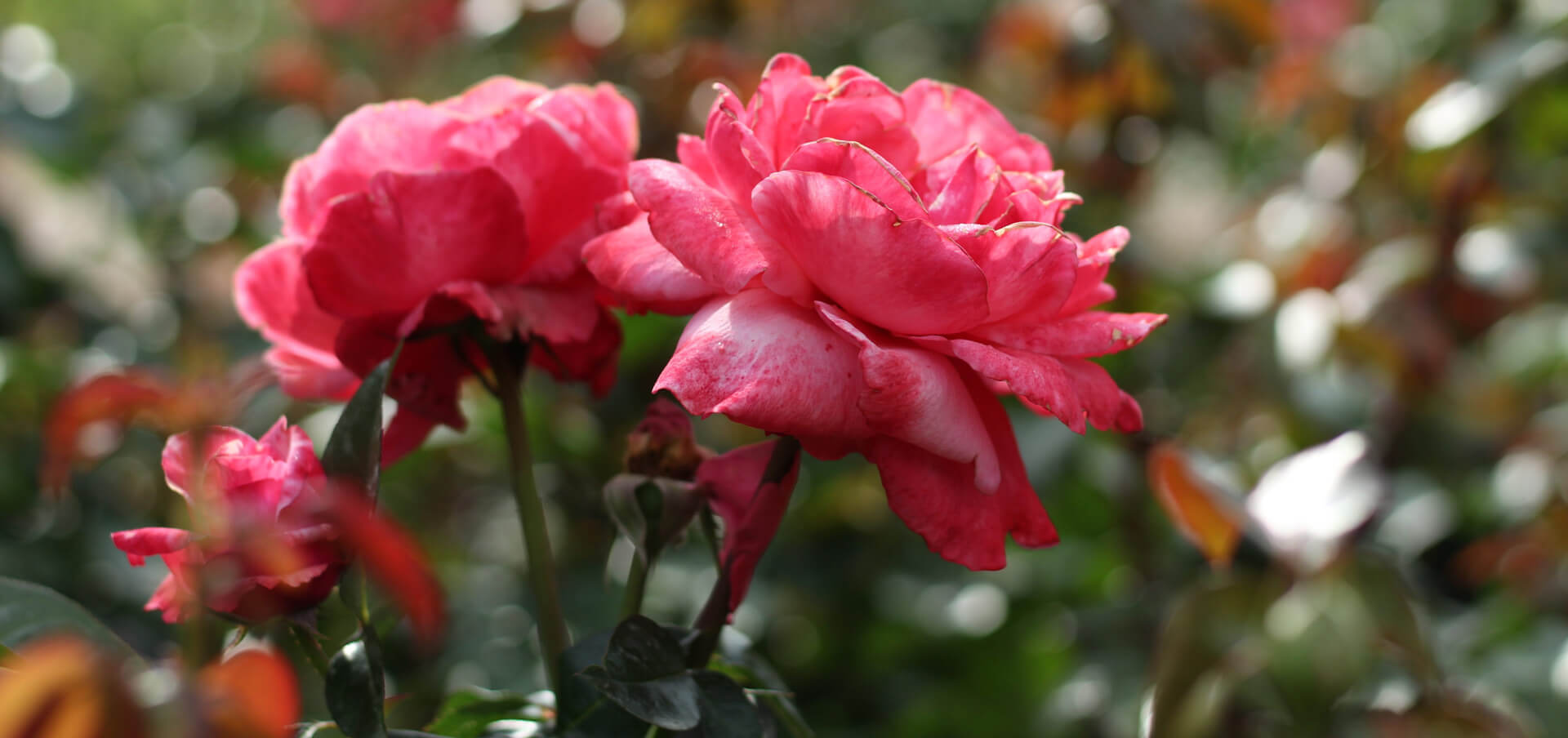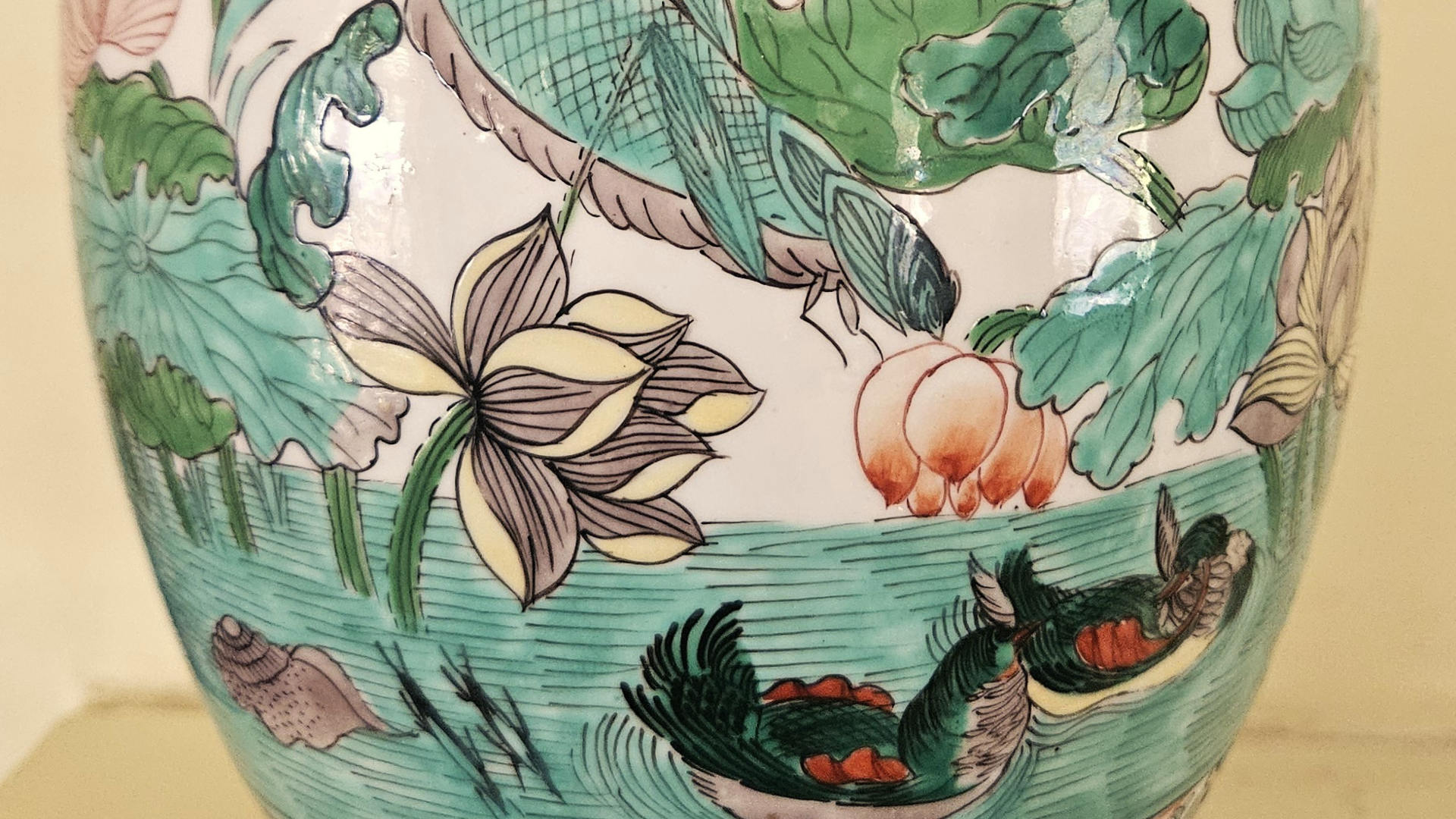The shape of a Chinese ginger jar may be traced to ancient China, with their wide covered mouth and tapered body. Their original purpose was to hold salt, spices, and oils and were often packed for shipment to the west. By the late 19th century that purpose had largely given way to their use as decorative objects in homes in the western hemisphere.
The Bellingrath Collection includes two examples. In the Day Parlor is a pair of beautiful porcelain ginger jars with brass bases and cover. These would have been created by a master potter and painted by a skilled artist. The decoration features a prominent cricket above a pair of swimming Mandarin ducks. Asian art often contains layers of meaning and symbols and these are a good example.
Crickets in Chinese art are associated with spring and summer. Here is one perched above a pair of swimming Mandarin ducks which are a motif for a long and happy marriage.
On the desk on the Living Porch is a smaller ginger jar of brass with a pierced rosewood cover, mounted on a wooden base. Around the sides in relief is a pair of dragons reaching for a pearl. The dragon in China has long represented imperial power and divine authority. The pearl between them symbolizes wealth and success. One popular interpretation of this scene is a long life without setbacks.
At first glance these examples of Chinese art are interesting but knowing the happy symbolic meanings of their decoration makes them all the more intriguing.


